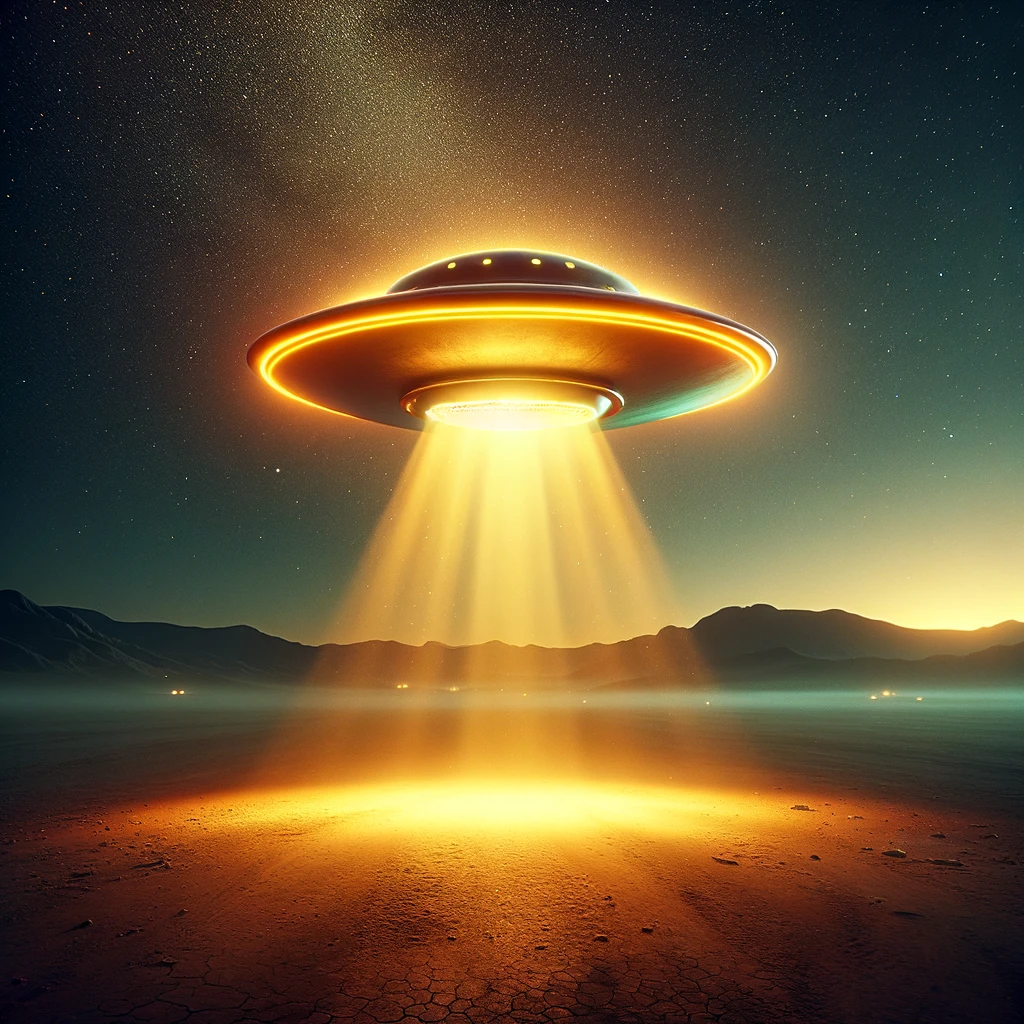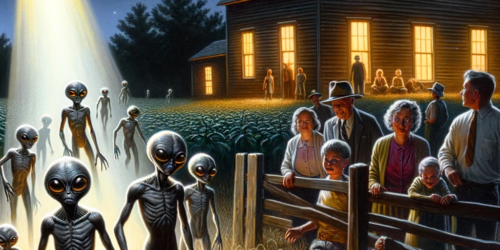Chuck Clark

The mysterious world of unidentified flying objects (UFOs) often intersects with the experiences of individuals living near secretive military bases, such as Area 51. People like Chuck Clark, an astronomer, photographer, and former military member, become key figures in the unfolding stories of UFO encounters due to their unique insights and experiences. Clark’s transition from directing the Western Spaceport Observatory to capturing inexplicable aerial phenomena on camera illustrates a journey from the realm of conventional astronomy to confronting the unknown. His narrative, as recounted by James Fox and Richard Dolan, provides not just a detailed account of a specific event but a window into the complex nature of UFO sightings, marked by unforeseen encounters and the challenging pursuit of tangible evidence.
In an interview, Richard Dolan spoke with James Fox about a mysterious piece of footage related to Chuck Clark, a notable figure in the UFO community for his work around Area 51. During the 90s, when Fox was working on his first UFO documentary, he became acquainted with Clark, a former military individual residing in Rachel, Nevada. Clark, known for his Area 51 guidebook, had discovered vantage points around the base where he could observe without trespassing. Fox recounted a significant event when Clark contacted him excitedly about a remarkable piece of footage he obtained from two young men who had been on a road trip to Area 51.
The footage, viewed on a VHS tape in Clark’s trailer, showcased a quintessential road trip until it captured an extraordinary event at dusk. The camera, positioned on the car’s armrest, recorded the interior of the vehicle illuminating with a yellow-orange glow, accompanied by the sound of the occupants in a state of panic, claiming that something was hovering over their car. The light inside the car appeared to move fluidly, creating an unusual play of shadows, unlike anything Fox had ever seen.
The camera eventually captured a clear image of a classic flying saucer, glowing and floating with a gentle rocking motion, akin to a ship on slightly rough water. This craft displayed a luminosity and behavior that were unprecedented and aligned with numerous eyewitness descriptions Fox had encountered over the years.
Unfortunately, the original footage remained elusive. Despite Fox’s efforts to acquire it directly from the young men who filmed it, Chuck Clark eventually warned him to stop asking about the footage, hinting that he no longer possessed it. This was corroborated by George Knapp, who informed Fox that Clark’s residence had been raided by federal authorities, likely leading to the confiscation of the tape. This piece of potentially groundbreaking evidence, therefore, remains one of the significant lost opportunities in the study of UFO phenomena.
Chuck Clark has dedicated four years of his life to closely observing the mysterious activities at Area 51 and its vicinity, resulting in the creation of his comprehensive “Area 51 and S4 Handbook.” Clark’s rigorous scrutiny of the site was conducted from vantage points like Whitesides and Freedom Ridge, utilizing high-powered telescopes until these areas were restricted to the public. His observations led to a significant sighting: an object he initially mistook for an aerial flare, launched from south of the base, which exhibited extraordinary capabilities. The object ascended to a 2,000-foot elevation, remained stationary for several minutes, and then performed a rapid horizontal movement covering nearly five miles in just 1 to 1.5 seconds. This astonishing speed, calculated by Clark to be between 9,000 and 14,000 miles per hour, defies conventional understanding of physics and suggests a technological capability far beyond current human achievements. The object’s ability to cast a glow on the ground, as noted by Clark, further substantiated its physical presence, ruling out the possibility of it being a mere optical illusion or projection. This incident, meticulously documented by Clark, challenges the boundaries of known science and calls for a serious contemplation of the phenomena reported by numerous credible observers around Area 51.
Chuck Clark, at another event in Nevada, along the Extraterrestrial Highway, recounted a fascinating experience during a rocket launch at Vandenberg Air Force Base, where he previously lived and directed the Western Spaceport Observatory. Engaged in a lengthy photographic project aimed at capturing celestial objects through telescopes, Clark found himself inadvertently documenting an unidentified flying object (UFO) during one of the rocket launches.
Clark explained that while tracking the rocket with his camera, an unexpected object appeared in the frame, sparking curiosity among the onlookers. Initially speculated to be the shuttle or a known satellite, the object’s presence became puzzling when it did not match any tracked entity, thus classifying it as a UFO. Clark, primarily a still photographer, had set up a video camera to document his shutter clicks during the launch. This setup was intended as a precautionary measure to capture any unforeseen incidents with the rocket, which might provide valuable insights into any malfunctions.
After noticing the mysterious object, Clark reached out to a friend involved in the launch’s tracking operations to inquire about the anomaly. His friend confirmed that the object was not the shuttle, as it was over Madagascar, nor the Mir space station, which was over Asia at the time. Further checks against the NORAD database failed to identify the object, officially classifying it as a UFO.
The tale of Clark securing footage of a classic flying saucer from an ordinary road trip, followed by his documentation of an unidentified object during a rocket launch, underscores the unpredictable and elusive character of UFO sightings. These events, marked by their spontaneous nature and the subsequent challenges in securing solid evidence, reflect the broader difficulties faced by researchers and enthusiasts in the field. The disappearance of the Area 51 footage following a federal raid, along with the inconclusive identification of the object at Vandenberg Air Force Base, underscore the ongoing tension between witnessing extraordinary phenomena and the ability to preserve and scrutinize such evidence.



